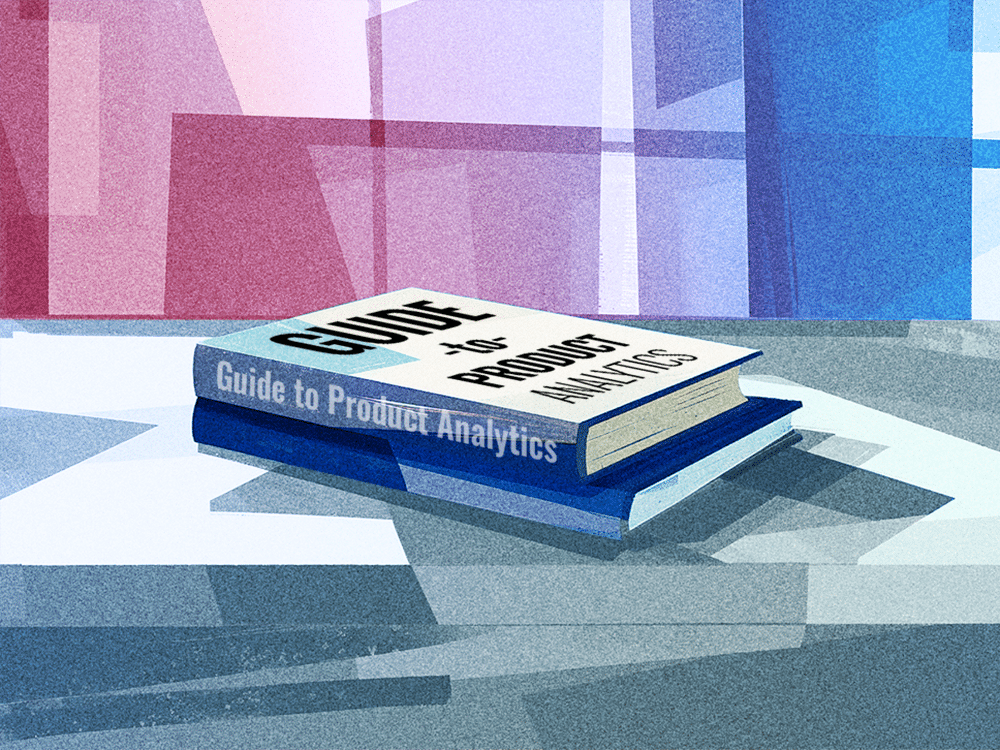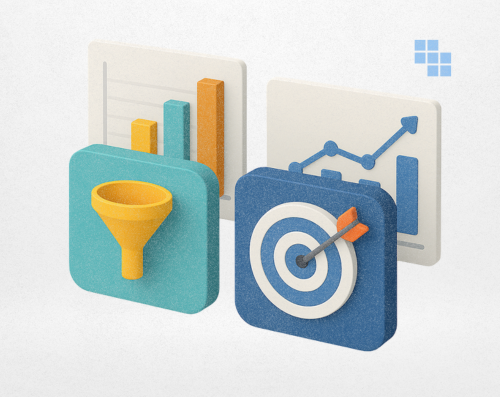Start here to understand how product analytics can change the way you approach customer experience
In the scheme of things, product analytics is a relatively new discipline. Its purpose is to give digital businesses, such as providers of eCommerce, digital apps, and media and entertainment a data-driven method of understanding exactly how users are engaging within their digital products.
Product analytics is used largely by product teams to analyze user engagement behavior and make fact-based decisions on how to optimize their products and customer experience. But it’s also used by data teams, analytics teams, and even marketing and finance teams.
When you want to understand the complete journey and experience of your customers, product analytics is your go-to tool.
So what is product analysis?
According to global analyst firm IDC:
“Product analytics serves as a guiding light, leading organizations toward data-driven strategies and well-informed decision-making. It provides a nuanced understanding of user behavior within digital ecosystems, enabling organizations to enhance product performance and elevate user experiences to new heights.”
Product analytics employs several analytical methods to deliver real-time, actionable insights.
For example:
- Time series analysis: Visualize metrics over time and break down to analyze performance.
- Funnel conversion analysis: Understand how customers are converting through key flows within your product.
- Behavioral cohort analysis: Create cohorts on the fly to further analyze individuals contained within your data points.
- User path analysis: Customize a user path based on the experience or the audience to understand customer experience.
- User retention analysis: Measure your product’s stickiness by analyzing both retention and usage intervals.
How do product analytics platforms work?
Historically, analytics were conducted directly in a data warehouse. Consider traditional Business Intelligence (BI) tools like Tableau, Looker, and PowerBI; typically, data analysts create reports and charts in these tools to visualize the insights that ultimately stem from executing SQLs in their own data warehouse. The data control is entirely in the hands of the enterprises, though this approach requires dedicated and influential engineering and analytics teams.
With the exponential growth of digital products, from web to mobile applications, a different way of conducting analytics emerged, such as Google Analytics. Due to the dynamics in the ecosystem, few enterprise data teams could keep up with the constant requirement changes and new data from different vendors. It became well-accepted to sacrifice integrity for speed by embedding SDKs and sending the data to third-party silos, and relying on a black box to get insights.
More recently, the practice of sharing customers’ private data, like device identifiers, with other vendors became no longer acceptable. Many enterprises now realize that it is impossible to have complete data governance, security, and privacy control if their sensitive data has been duplicated and stored in third parties’ data silos. How can they trust the insights from a black box that can never reconcile with their data? Without a single source of truth, your insights don’t have the integrity to justify decision-making.
Cloud warehouses have become many organizations’ source of truth, leveraging millions of dollars in infrastructure investments. Scaling access to this information used to be as simple as dumping all the data into a warehouse and reverting to the BI tools. Unfortunately, reporting tools like Tableau, Looker, or PowerBI were designed exclusively for professionals answering static questions. To get insights, most product, marketing, and business people rely on analysts to build reports to answer their questions.
This self-service demand and warehouse-native motion triggered a new generation of tools that provide SaaS product analytics directly from customers’ cloud data warehouse. It perfectly balances integrity and speed, which should be the objective of analytics platforms.
Four characteristics of a next-generation, truly warehouse-native product analytics solution:
- Tailored to your data model: A warehouse-native solution should continually adapt to the customer’s data model instead of forcing them to develop ETL jobs to transform their data.
- Data should never leave your control: This should be assumed under the term ‘warehouse-native’; however, some solutions are engaging in warehouse syncing or mirroring to copy customers’ data into their data silos.
- Complete transparency with SQL: One of the most prominent traits of a proper warehouse-native solution is to provide customers with the SQL behind every report.
- Dynamic configuration with exploratory insights: Because all reports come directly from the data in a customer’s warehouse leveraging SQL, every insight should be dynamically generated.
Read this blog post to fully understand what warehouse-native product analytics is, what it is not, and why enterprise leaders are making it part of their data strategy.
Who uses product analytics?
Product analytics is not only for product managers. It can be employed across the entire organization, providing data-based insights for analytics teams, data teams, growth teams, marketing teams, finance teams, customer success, operations, sales, executive management, and more. It’s a tool that can deliver value enterprise-wide.
Top industries using product analytics today:
- Media and entertainment
- eCommerce and retail
- Digital native businesses
- Healthcare
- Financial services
Product analytics for product managers
For product managers, product analytics help them learn as much as possible about the customer experience within their product so they can identify high-value and measurable opportunities for optimization.
Warehouse-native product analytics tools enable product managers to increase the quality and velocity of their decision-making using the power of their own data warehouse. Product analytics uses their data as a single source of truth to help product managers explore, iterate, and take decisive actions to innovate with confidence.
Product management analytics helps product managers:
- Leverage their complete and trusted data set within their own data warehouse to increase confidence in their insights
- Analyze behavioral cohorts, user paths, retention, and conversion metrics within an intuitive and self-service user interface
- Scale their analytical model by building a knowledge base with shareable, reusable, and governed components
- Expand analytics to more use cases to deliver added insights and uncover new opportunities
Product analytics for data scientists
Product analytics helps data teams reach farther with their data. By leveraging their existing data model and deploying self-service product analytics, data scientists can empower the entire organization to do more with their data. Using a warehouse-native analytics solution means that the data team never has to move or copy their data to deliver insights.
Data scientists can seamlessly integrate no-code product analytics into their evolving cloud data warehouse strategy, benefiting from:
- No additional transformation or data silo, leveraging the existing data model using direct connect or data share.
- Delivery of reliable data that can be leveraged by all product, analytics, and marketing teams via a self-service UI.
- Best-in-class governance and security tethered to the warehouse with product analytics tools that query rather than ingest data.
- Ability to work directly with any data model, all without ETL.
Product analytics for sales leaders
Product analytics helps sales leaders to optimize the sales funnel and make improvements to the sales process to gain efficiencies and ultimately get better results.
Product analytics for sales can also better inform the sales team about features, engagement, and content that users are interacting with most, supporting sales strategies.
Product analytics for sales leaders example use cases:
- Customer insights: Understand customer behaviors such as usage patterns and customer journey; which features are most valuable and how often they are used; which features drive conversion rates, etc.
- Sales opportunities: Use product analytics to identify cross-selling or upselling opportunities; understand which features are used by different customer segments to identify opportunities.
- Sales training: Train the sales team to focus on the features that drive the most value for customers.
- Market segmentation: Better understand different market segments and their unique needs.
Product analytics for CEOs and executive leadership
CEOs and those in executive leadership can use product analytics to make more informed, data-based, strategic decisions about the future of digital products. When the C-level endorses and engages in a data-driven culture from the top, it creates an environment that encourages the use of data in making decisions at every level in the organization.
Why is product analytics so important?
When optimally deployed, product analytics reveals numerous paths and opportunities to better engage customers across the entire customer experience journey. With product analytics, organizations can take a data-driven approach to optimizing customer experiences using up-to-date insights about the ways that users are interacting with digital products. Product analytics supports organizations to exceed user retention goals, reduce churn rate, and foster customer loyalty.
When product, data, and analytics teams can understand which features resonate with a certain cohort of customers, for example, they can use that data to strategically take measures to increase customer loyalty and spend. Feature preferences, page engagement, user paths…all provide insight that can drive enhancements.
When product owners can identify places of friction in the customer experience when using their product, they can take action to implement strategies for improvement. Monitoring of customer satisfaction metrics and feedback also drives iterative product refinement.
Product analytics can act also as a defense against customer churn. By closely analyzing the behavior of customers who stay and those who leave, organizations can better pinpoint the underlying reasons behind customer attrition and take corrective action.
Unlock the full potential of product analytics to transform the customer experience
What kind of product analysis should you be doing? Common metrics to measure.
Here are five of the most common use cases and associated metrics for product analytics. Keep reading about meaningful metrics for product analytics on our blog here.
User behavior analysis
Analyze all the action events your users take, explicitly (in the UI) or implicitly (backend or third party).
For example:
- App launch
- Login
- Page/Screen view
- Clicks
- Purchase
- Subscription renewal
- Likes
User engagement
Count the occurrences of certain events and compare their ratios through a time series to understand how your users engage with your products over time.
For example:
- DAU, MAU: Number of unique users per day or month
- Streams (Events) / DAU: Number of streams per daily active users
- Viewing minutes: Sum of the total time across multiple viewed events
- Revenue/Order: Average purchase amount across multiple order events
Conversion analysis
Measure the conversion/drop-off rate between the steps of key user flows like registration, checkout, or social loop funnels.
For example:
- Registration success rate: Percentage of guest users who complete the registration flow
- Attach rate: Percentage of users who complete the subscription or purchase flow after seeing the paywall
Retention
Measure how often your users come back and why.
For example:
- Dn, Wn Retention: Percentage of new users who open the app again on D1/D2, or W1/W2 (used to compare the effectiveness of user acquisition or reactivation campaigns)
- Viewing retention: Percentage of users who continuously watch certain shows at different time intervals (daily, weekly, monthly)
- Subscription retention: Percentage of your subscribers who renew over time
Cohort analysis
Segment users by certain criteria to enable dynamic identification and tracking of the behavior of specific groups. Use this data to inform product decisions.
For example:
- Active viewers: Users who watched more than one hour of a certain show in the last seven days
- Churned subscribers: Users who didn’t renew their subscriptions
- Dormant users: Users who didn’t open the app for more than a week
Product analytics best practices
Product analytics is a field that’s constantly evolving, and it’s important for companies to stay up to date on the latest trends and technologies in order to make informed decisions about their products. Modern product analytics tools offer significant improvements over first-generation models, providing more strategic deployment options, data quality, and extensibility. Here are some best practices we recommend.
Product analytics implementation
Optimal deployment is key to reaping maximum value from product analytics solutions. Historically, deployment of product analytics solutions has been plagued with issues such as internal data silos and a lack of technical or engineering resources, making it difficult for organizations to realize significant gains from these solutions in a timely manner. That’s why we recommend selecting a product analytics solution that is:
- No-code
- Warehouse-native
- Zero ETL
These solutions access and analyze data directly from its source in real or near-real time. They are integrated directly within an organization’s data warehouse ecosystem, leveraging its architecture for data processing and analytics. In this approach, there is only one single source of truth when it comes to data.
Data modeling
Product analytics is quite complex, and the data model can be even more so, because no two digital products have the same use cases, data sources, or vendors. The approach to data modeling has evolved since the launch of first-generation product analytics tools. The new stage of data modeling is specifically designed for your product and your business and can adapt to your specific needs. Instead of pushing a “perfect data model,” follow these general principles and best practices:
Star schema
The cornerstone of the analytical data model, which simply refers to the shape of the Entity Relationship (ER) diagram, where a centralized fact table (what happened) is surrounded by many dimension tables (the properties to analyze by), connected by distinct IDs.
Append-only
Analytical insights must be repeatable and verifiable. Not only are data warehouse tables mostly read-only, they are also append-only. This means data flows into these tables like a log: every entry is immutable, and you only append new entries instead of updating/changing what happened in the past.
Denormalized
Data warehouses are specially designed to store denormalized data efficiently, and to utilize it for very fast analytical queries over billions of rows (terabytes) of data. The fact table should be denormalized to avoid unnecessary table joins. This means you should capture as many properties as possible when the event happens and store them as separate fields/columns in the fact table.
Data governance
Proper data governance is required to manage the complex data models for product analytics. Data governance best practices (which are often ignored) include maintaining a data dictionary and monitoring data quality. Without these steps, your data risks being mostly “garbage in, garbage out.”
For a complete list best practices for data modeling for product analytics, read our eBook, A CTO’s Guide to Data Modeling for Product Analytics.
Timing
Organizations are often under the impression that they need to first improve their current data model before deploying product analytics. But this is not the case. Product analytics is not a one-time project; it’s an iterative process that changes as you fine-tune your data. Without testing and verifying against your actual use cases, the “perfect data model”, even in the best circumstances, will require ongoing revisions. That’s why we say that the best time to start product analytics is now.
There is no requirement to have “clean” data for product analytics to be effective. Raw data is perfect for running some quick and dirty analyses to get instant insights. It’s also great for figuring out and verifying your analytics needs and, more importantly, for troubleshooting at the lowest possible granular level.
A product analytics tool can work on top of the current “raw” data model while building the “clean” one. It should be able to support them both concurrently and give you the iterative path to migrate and evolve your product analytics.
How to get started
With the Kubit analytics platform, companies never have to move their data into silos to gain valuable customer insights. This warehouse-native approach lowers the cost of ownership, frees up engineering resources, and delivers more accurate and complete self-service insights.Want to see how it works? Take a tour here.
Frequently asked questions
What’s the difference between product analysis and business intelligence?
| Product Analytics: A relatively new discipline that enables everyone from Product to Marketing to Growth teams to understand how users are engaging within your digital products. | Business Intelligence: A longstanding discipline for businesses to understand and analyze critical metrics for all parts of the organization. |
| Delivers metrics using a tool specific to product analytics Enables users to self-serve on large amounts of data, quicklyFocuses primarily on time series data and typically resorts in cohorts or user segments based on behaviorCollects data from your digital product, such as an app, streaming platform, website, online store, or connected devices | Delivers metrics using tools like Tableau, Looker, or Power BIDerives metrics typically from your organization’s data warehouseReports on various departments including Revenue, Customer, Operations, Marketing, etc.Managed by an internal team of data engineers, data scientists, and other analytical roles |
What’s the difference between mobile analytics and product analytics?
Mobile analytics is a branch of product analytics. It gathers data from mobile apps about how users engage with the app to help guide decision-making in optimizing the app and user experience.
As the world’s population increasingly prefers to shop, read, and watch on mobile devices, the big question for just about every business is: what are the best mobile analytics practices today?
Read this blog post to get a summary of some of the best mobile analytics practices in the industry today, such as prioritizing data quality over quantity and putting more emphasis on collaboration and communication.
How does product analytics help companies improve revenue?
The application of relevant metrics can truly drive business growth. When created and measured appropriately, metrics can help illuminate the path to better customer experiences, optimized products, and business success. The key lies in selecting ones that are meaningful, actionable, and tied to your specific business objectives.
By analyzing the ways in which your customers are engaging with your products—where they spend their time, where they experience friction, at what point they increase or decrease engagement—you have the data you need to improve your digital product to optimize their experience, increase customer loyalty, and better grow and retain your customer base.
How do product analytics platforms work?
Historically, analytics were conducted directly in a data warehouse. Consider traditional Business Intelligence (BI) tools like Tableau, Looker, and PowerBI; typically, data analysts create reports and charts in these tools to visualize the insights that ultimately stem from executing SQLs in their own data warehouse. The data control is entirely in the hands of the enterprises, though this approach requires dedicated and influential engineering and analytics teams.
With the exponential growth of digital products, from web to mobile applications, a different way of conducting analytics emerged, such as Google Analytics. Due to the dynamics in the ecosystem, few enterprise data teams could keep up with the constant requirement changes and new data from different vendors. It became well-accepted to sacrifice integrity for speed by embedding SDKs and sending the data to third-party silos, and relying on a black box to get insights.
More recently, the practice of sharing customers’ private data, like device identifiers, with other vendors became no longer acceptable. Many enterprises now realize that it is impossible to have complete data governance, security, and privacy control if their sensitive data has been duplicated and stored in third parties’ data silos. How can they trust the insights from a black box that can never reconcile with their data? Without a single source of truth, your insights don’t have the integrity to justify decision-making.
Cloud warehouses have become many organizations’ source of truth, leveraging millions of dollars in infrastructure investments. Scaling access to this information used to be as simple as dumping all the data into a warehouse and reverting to the BI tools. Unfortunately, reporting tools like Tableau, Looker, or PowerBI were designed exclusively for professionals answering static questions. To get insights, most product, marketing, and business people rely on analysts to build reports to answer their questions.
This self-service demand and warehouse-native motion triggered a new generation of tools that provide SaaS product analytics directly from customers’ cloud data warehouse. It perfectly balances integrity and speed, which should be the objective of analytics platforms.
Four characteristics of a next-generation, truly warehouse-native product analytics solution:
- Tailored to your data model: A warehouse-native solution should continually adapt to the customer’s data model instead of forcing them to develop ETL jobs to transform their data.
- Data should never leave your control: This should be assumed under the term ‘warehouse-native’; however, some solutions are engaging in warehouse syncing or mirroring to copy customers’ data into their data silos.
- Complete transparency with SQL: One of the most prominent traits of a proper warehouse-native solution is to provide customers with the SQL behind every report.
- Dynamic configuration with exploratory insights: Because all reports come directly from the data in a customer’s warehouse leveraging SQL, every insight should be dynamically generated.
Read this blog post to fully understand what warehouse-native product analytics is, what it is not, and why enterprise leaders are making it part of their data strategy.
What are some product analytics companies?
Product analytics vendors such as Mixpanel, Pendo, and Heap offer product analytics solutions that function by ingesting data for analysis. Kubit product analytics takes a fundamentally different approach with its warehouse-native architecture. Without requiring businesses to move their data or sacrifice security, Kubit is able to read data from the existing data warehouse. This simplified warehouse-native approach lowers the cost of ownership for customers, frees up their engineering resources by providing self-service, and delivers more accurate, transparent, and complete insights—with 6x faster deployment.








